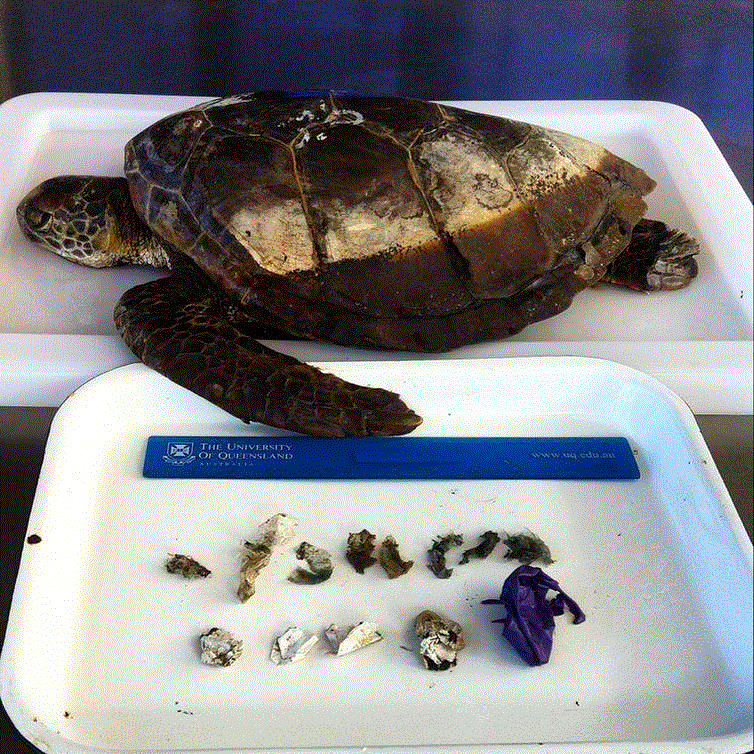Researchers have found that more than 50% of dead turtles found in the shores of Queensland have plastic in their stomachs. For younger turtles, a single piece of plastic could raise their chances of death. This could have a long-term impact on the population of turtles which have a lifespan of 80 years and can reproduce for several decades.
One piece of plastic, 20% chance of dying
The deaths of turtles on the shores of Australia have raised concern about how this affects the species and the overall marine population. Pollution has had a significant effect on the ocean, but recent studies suggest that once a turtle has eaten one piece of plastic, it has a 20% chance of dying. Most of these turtle deaths occur to younglings, compared to adult or juvenile turtles that could have 17 pieces of plastic before dying. Young turtles are mostly affected by plastic because they swim near to the surface, where plastic is most prevalent. These statistics have been published by the Commonwealth Scientific and Industrial Research Organization in Hobart, Australia.

Another research from the Nature Scientific Reports in conjunction with the Queensland Turtle Stranding Database affirms that 14 pieces of plastic eaten by an adult turtle (45 cm) raises his chances of dying by 50%. For this study, researchers collected over 1000 turtles to determine the death cause. Even though they varied significantly, at least 250 turtles had plastic in their stomachs in varying amounts. The plastic either punctures or blocks the guts of these animals. Some of the most common plastic comes from ropes, fishing lines, balloons, bags, and bottles. Researcher Britta Denise Hardesty affirms that some plastics might resemble jellyfish, squids, crustaceans or sponges.
Further research to understand the effects of plastic
Some researchers, like Jennifer Lynch, believe that the study should also have taken into account the weight of the plastic rather than the pieces. Even though many turtles die from plastic, others are able to digest it and expulse it from their bodies. What these researchers can’t deny is that, as more studies show the effects of plastic in turtles, more people will be conscious of this issue in their own countries.
Other countries, like Brazil and Uruguay, also have raised concerns about the effects of pollution on turtles. By determining how much plastic they eat, researchers can people how this affect our environment and take protective measures for turtles.
More than 10 million tons of plastic are thrown into the ocean every year. With species such as turtles that have had a significant decline in the past decades, these numbers are raising awareness on the effects of plastic litter and how authorities must take strides to prevent extinction. Most of the plastic found in the ocean comes from land, so taking measures to clean the shores could have a drastic effect.
Source: Scientific Reports
